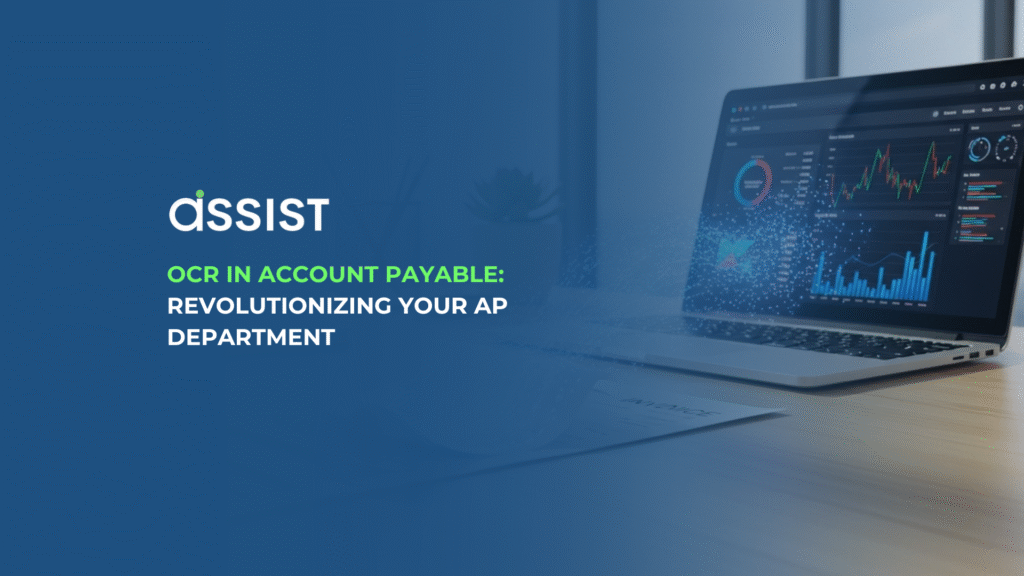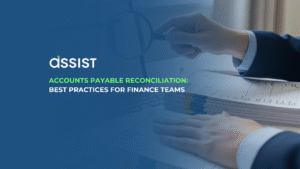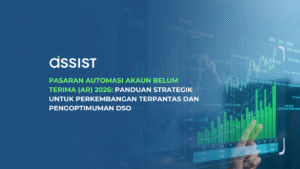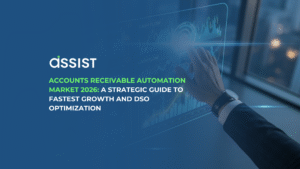OCR In Accounts Payable: Revolutionizing Your AP Department
OCR in accounts payable is a technology that automatically extracts data from invoices and other financial documents, drastically reducing manual data entry and improving efficiency. This technology is a game-changer for businesses looking to streamline their financial operations and gain a competitive edge. Let’s explore together how this technology works, its tangible benefits for APAC businesses, and how you can implement it to transform your financial operations from a cost centre to a powerhouse of efficiency.
What is OCR and How Does it Transform Accounts Payable?
Defining OCR: From Simple Text Recognition to Intelligent Data Capture
At its core, Optical Character Recognition (OCR) is a technology that converts different types of documents, such as scanned paper documents, PDFs, or images, into editable and searchable data. However, modern OCR has evolved far beyond simple text recognition. Today’s solutions, often powered by Artificial Intelligence (AI) and Machine Learning (ML), represent a leap into intelligent data capture. They don’t just “see” the characters on an invoice; they understand the context. This technology can identify and extract key information like invoice numbers, dates, vendor details, line items, and totals with remarkable accuracy. For a deeper dive into the technology, you can explore our comprehensive guide to OCR (Optical Character Recognition).
The End of Manual Data Entry: How OCR Automates Invoice Processing
Imagine your AP process freed from the drudgery of manual keying. When an invoice arrives whether by email or as a paper scan an OCR-powered system automatically captures it. The intelligent software reads the document, extracts the relevant data, and validates it against your existing records, such as purchase orders.
This single step kickstarts a domino effect of efficiency. With the data digitized and structured, invoices can be automatically coded, routed for approval, and flagged for discrepancies without a human touching a keyboard. This automation doesn’t just accelerate the process; it fundamentally changes the role of your AP team from data entry clerks to strategic financial operators. The move towards automation offers incredible benefits, and if you’re curious, you can read about the top 5 reasons to use automated bookkeeping.
The Tangible Business Impact: Why Your APAC Company Needs OCR for AP
Beyond Speed: Uncovering the Cost Savings and ROI of AP Automation
Adopting OCR is not merely about processing invoices faster; it’s a strategic business decision with a significant and measurable return on investment (ROI). Industry benchmarks show that manual invoice processing can cost anywhere from $12 to $30 per invoice, depending on complexity. Automated solutions can slash that cost by up to 80%.
Consider the financial impact:
- Reduced Labour Costs: By automating data entry and validation, you free up your team to focus on higher-value tasks like cash flow analysis and vendor relationship management.
- Elimination of Late Payment Fees: Faster processing cycles ensure that invoices are approved and paid on time, avoiding costly penalties and helping you capture early payment discounts.
- Enhanced Data Accuracy: AI-powered OCR significantly reduces the risk of human error, preventing duplicate payments and incorrect data entries that can lead to financial losses and compliance issues.
Case Study: How a Logistics Company in Singapore Transformed their AP with OCR
Pioneer Logistics, a mid-sized freight forwarding company based in Singapore, was struggling with a high volume of invoices from international carriers and local suppliers. Their manual AP process was slow, error-prone, and required three full-time staff members dedicated to data entry. This led to frequent payment delays, strained vendor relationships, and a lack of real-time visibility into their cash flow.
By implementing an OCR-powered AP automation solution, Pioneer Logistics achieved a complete turnaround. Within six months, they reduced their invoice processing time from an average of 15 days to just 2 days. Data entry errors were virtually eliminated, and they were able to reallocate two of their AP staff to more strategic financial planning roles. The company reported a 60% reduction in overall AP processing costs and improved their ability to negotiate better terms with suppliers thanks to prompt payments. You can explore more success stories on our main case study page.
From Theory to Practice: Implementing OCR in Your AP Workflow
A Step-by-Step Guide to Adopting OCR Technology
Transitioning to an automated system can seem daunting, but it can be a smooth process when broken down into manageable steps:
- Assess Your Current Process: Map out your existing AP workflow to identify the biggest bottlenecks and pain points.
- Define Your Goals: What do you want to achieve? Faster processing times, lower costs, better accuracy? Clear goals will guide your vendor selection.
- Choose the Right Partner: Select a solution provider that understands the nuances of the APAC market and offers robust support.
- Run a Pilot Program: Start with a small, controlled group of vendors or a specific invoice type to test the system and train your team.
- Integrate and Scale: Once the pilot is successful, integrate the solution with your core financial systems and roll it out across the entire organization.
Overcoming the Hurdles: Integrating OCR with Your Existing ERP and Accounting Software
A primary concern for many businesses is how new technology will fit into their existing ecosystem. Modern AP automation solutions are designed for seamless integration. Whether your business runs on a global ERP system or popular cloud accounting software, APIs and pre-built connectors make the process straightforward. This ensures that the data captured by OCR flows directly into your financial source of truth without disruption. Many solutions offer out-of-the-box integration with Xero and provide simple pathways for integration with QuickBooks, ensuring a smooth transition.
Choosing the Right OCR Solution for Your Business
A Feature Comparison: What to Look for in an OCR-powered AP Solution
Not all OCR solutions are created equal. As you evaluate your options, look for a platform that offers more than just basic data extraction. A top-tier solution should include:
- High Accuracy Rates: Look for AI-powered systems that learn and improve over time.
- Automated Validation: The ability to cross-reference invoice data with purchase orders and delivery notes automatically.
- Customizable Workflows: The flexibility to create approval chains that match your company’s policies.
- Seamless ERP/Accounting Integration: Pre-built connectors for your existing software.
- A User-Friendly Interface: An intuitive platform that requires minimal training for your team.
- Comprehensive Analytics: Dashboards that provide real-time visibility into AP performance and cash flow.
Understanding these key features and benefits is crucial to selecting a partner that can truly transform your operations.
The Future is Now: Embracing AI-Powered AP Automation with Assist
The evidence is clear: for businesses in the APAC region looking to scale and compete, automating the accounts payable process with OCR technology is no longer an option it’s a necessity. By eliminating manual tasks, reducing costs, and unlocking valuable financial data, you empower your team to drive the business forward.
If you’re ready to leave behind the inefficiencies of manual invoice processing and embrace a smarter, more streamlined future, Assist is here to help. Our AI-powered solution is designed to make AP automation simple, affordable, and compliant. See the difference for yourself when you Register for using Assist solution and try it for free. To learn more about our packages, you can view our pricing, and to understand the team behind the technology, feel free to read more about us.




